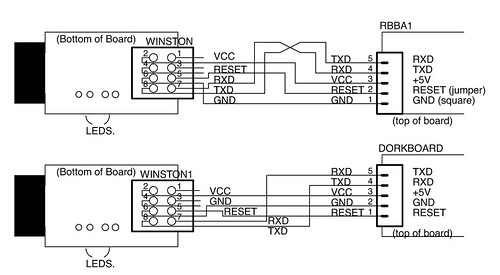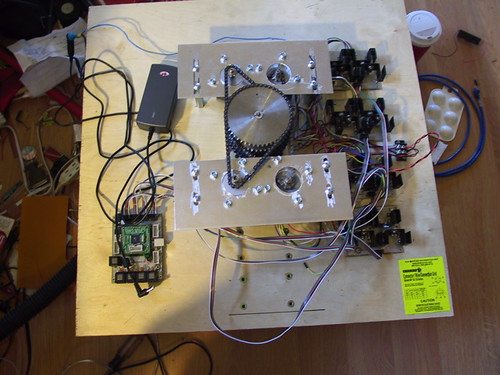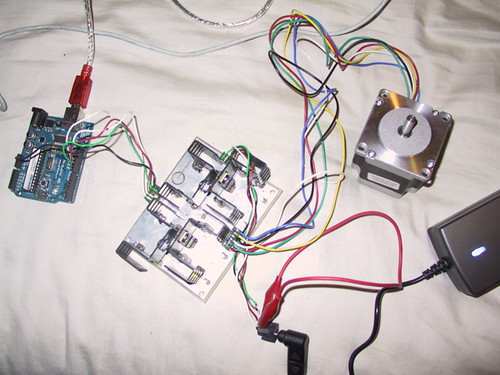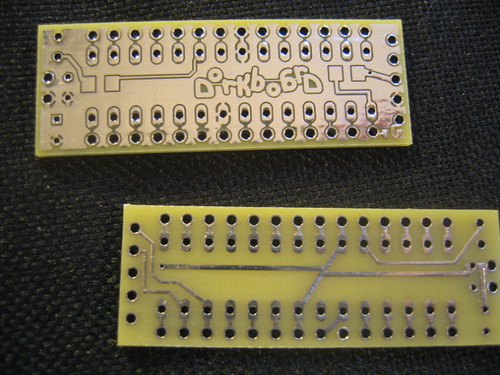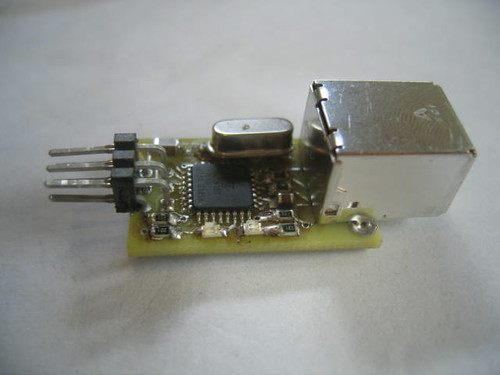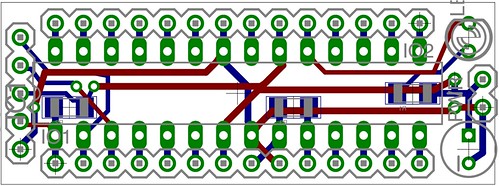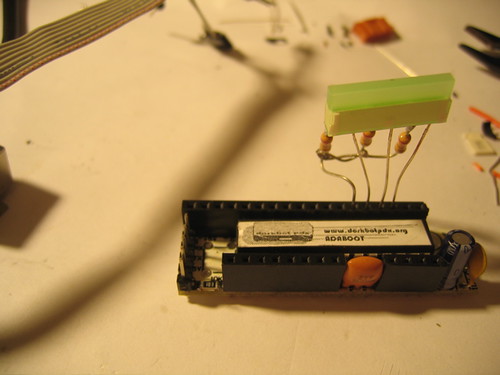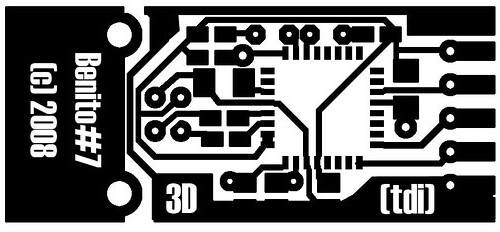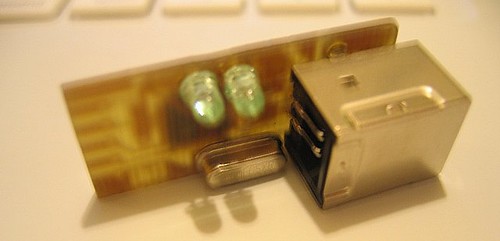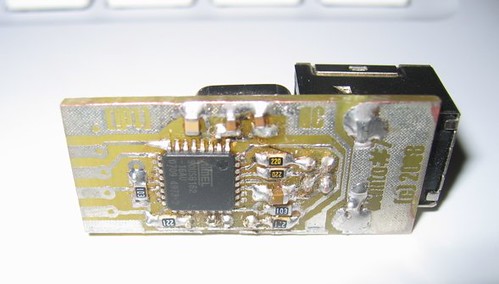In the course of the Arduino Cult Induction series and the group purchases, I have evolved several versions of the DorkbotPDX programmer and released them into the wild. Unfortunately the pinouts for the programming cable have evolved with the programmers so the cables are unique to each. With the batch of programmers we just purchased this will settle down Though the pinout may not make sense in this particular case it will be the same for at least 1000 boards.
Here is a quick guide to cables for the DorkbotPDX programming boards for the rbba and the dorkboard.
Benito7 rev G
(1000 Currently being released into the wild)
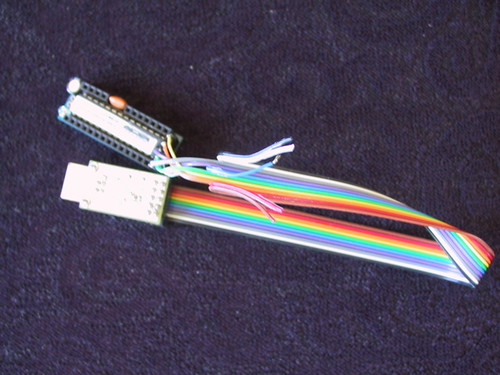
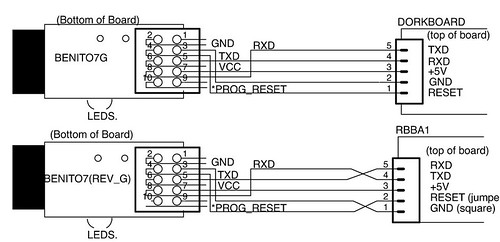
Benito7 rev a
(26 known to be in the wild 16 from Sunstone 10 hand rolled)
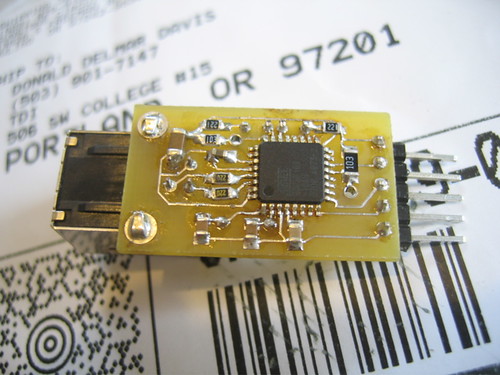
Cables for the benito7 should look like this.
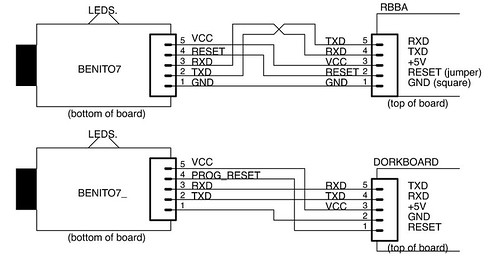
Winston (rev3) — hand rolled,
(at least 50 known to be have been released into the wild)
The winston board was my first usb to serial programming board.

